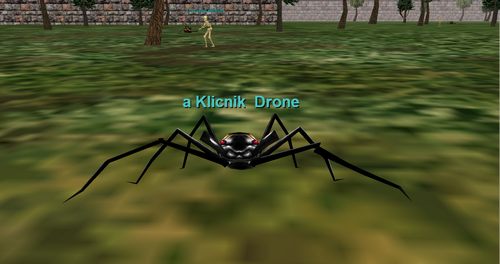From smallest to biggest:
Bits (basic unit)
Bytes (8:1 reduction)
Words (4:1 reduction)
KiB (32:1 reduction)
MiB (1024:1)
GiB (1024:1)
TiB (1024:1)
PiB (1024:1)
A normal amount of porn (237:1)
Words aren’t always four bytes
Words (4:1 reduction)
Word is imperial unit. Like one british gallon is not equal to one us gallon, one x86 word is not equal one ARM word.
All definitely not metric as metric uses steps of 1000 (and there’s also 10 and 100 and 1/10th and 1/100th but that doesn’t extend to 10000 and 1/10000th).
The KiB, MiB, etc, the 2^10 scale is called binary prefixes (as opposed to decimal prefixes KB, MB, etc) and standardised by the IEC.
And while the B in KiB is always going to mean eight bits it’s not a given that a byte is actually eight bits, network people still use “octet” to disambiguate because back in the days there were plenty of architectures around with other byte sizes. “byte” simply means “smallest number of bits an operation like addition will be done in” in the context of architectures. Then you have word for two bytes, d(ouble)word for four, q(uad)word for eight, o(cto)word for 16, and presumably h(ex)word for 32 it’s already hard to find owords in the wild. Yes it’s off by one of course it’s off by one what do you expect it’s about computers. There’s also nibble for half a byte.
The bit, at least, is not under contention everyone agrees what it is. Though you can occasionally see people staring in wild disbelief and confusion at statements such as “this information can be stored in ~1.58 bits”. That number is ~ log2 3, that is, the information that fits in one trit. Such as “true, false, maybe”.
So you’re saying my proposed imperial units depend on where you are, and who is using them, for what purpose? That just sells me on them as imperial units even more. :)
Thank you for the details.
Great write up, glad to see mention of nibble (my favorite lol)… You forgot to mention byte order (Little/Big Endian).
M$ already fucked that up for everybody calling GiB GB.
Cut to a younger me looking at HDDs in Walmart, and wondering why the fuck they were using much higher numbers than what the drive actually had. That’s when I learned the difference, and started grow my hate for advertising bullshit.
Imperial, obviously: F(reedom)T(ons) and fractions thereof. 1FT is the amount of data that it takes to store the entire King James edition of the New Testament and the Bill of Rights as a PDF.
A bit in Freedom units is 2 metric bits. A metric bit is equivalent to a freedom unit lil’bit, cause it’s smaller than a bit. A bite (no relation to a byte) is 25 lil’bits because saying 25 ones and zeros outload is a mouthful. A hot dog is 4.2 bites or 105 lil’bits because that’s how many bites it takes me to eat a hot dog. A hamburger is 6.4 bites because it takes more bites to eat. A double with cheese is 7.8 bites. A whole hog is 233 hot dogs. A stampede is 23146 hamburgers.
1 sperm is 37.5MB.
If it’s for American context then you mean 1 baby
Every sperm is sacred.
Football fields, Olympic size swimming pools, hotdogs, and quarters
All, of course based on how many kerned 1s and 0s (alternatingly) you could fit printed in 12pt Times New Roman font within the thing’s length.
Also, you need to alternate rounding your error (i.e. quarter rounds down, but hotdog rounds up, etc)
why go for RAMs when the constitution says ARMs…
and no more bits or bytes too, double bytes small or quadbytes regular size all the way.
-
kilo bytes is a grand
-
mega bytes is a venti
-
giga bytes is a grand venti
-
terabytes is a doble venti
really large amounts of ARM is a ton
-
1TB can be Recommended Chrome Ram?
Dec = 10 Cent = 100 Mil = 1000
Using historical, global linear language sounds good to me
Metric uses those for numbers less than 1, a situation that doesn’t arrise in computing. There is nothing less than a bit, whether its set to 1 or 0.
If you wanna be American, you gotta start thinking outside the box. A bit has two states, right? So a half-bit has only one state. Half-bits are truly American.
All hail Analog! ;P
Power of Two
1GB is 29.8975 pots
1MB is 19.9315 pots
KiB, MiB, GiB, TiB
An Uvalde is the memory equivalent of PCM 48 kHz sample rate of children screaming.
No, those are not metric, they just borrowed some prefixes, although it’s not like metric designers invented those anyways.
Letter to Grandma, The Bible, Vacation photo album, and Video Collection
I use jiffies to refer to clock speed.




